by C. Elkins, OK Math and Reading Lady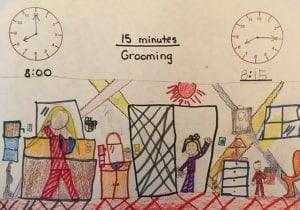
Concepts of time are one of the subjects we teach at school, but often has more application at home: Time for bed, time to eat, time to clean up your room, time to play, and so on. I have found when working with students in 3rd and 4th grades about elapsed time, that they often don’t have a very good concept of time. It’s no wonder. We (as teachers or parents) say, “You have 1 minute to . . .” or “I’ll be there in a minute!” But in reality that minute has stretched to much more like 5 or 10.
So what can we do to help with concepts of time at school (or home)?
- Post a copy of the daily schedule. Refer to it often.
- Use a timer for certain tasks.
- If you announce a time, stick to it.
Try these activities with students. The ones you use will depend on the grade level. Click here for a FREE copy of the brainstorming recording sheets (pictured below): What can you do in 1 sec., min., hour
- “Tick-tock” — It takes about 1 second to say this word. Brainstorm what things can be done in this amount of time. Try some of them out (clap, blink, snap, swallow, etc.). It’s effective and engaging to have students brainstorm first with a partner before sharing with the whole class.
- Watch an analog clock for 1 minute: Observe the second hand going around 1 complete time. It feels like a long time has passed when actually watching it. Brainstorm things that can typically be completed in one minute (brush teeth, put on socks and shoes, drink some water, etc.)
- You may want to discuss other chunks of time (especially 5 minutes or 15 minutes since we eventually want students to be able to read a clock in these increments). 5 minutes — eat a snack, get dressed, walk across the school. 15 minutes — walk to school, finish a worksheet, eat a sandwich.
- Brainstorm events that take about 30 minutes (eat lunch, watch a sit-com, take a bath) and an hour (basketball practice, chores, shopping, math period).
- Incorporate writing and drawing to name a start time and an end time with a label or a couple of sentences about the activity (see attached). Even 1st and 2nd graders can begin to think about this amount of elapsed time.
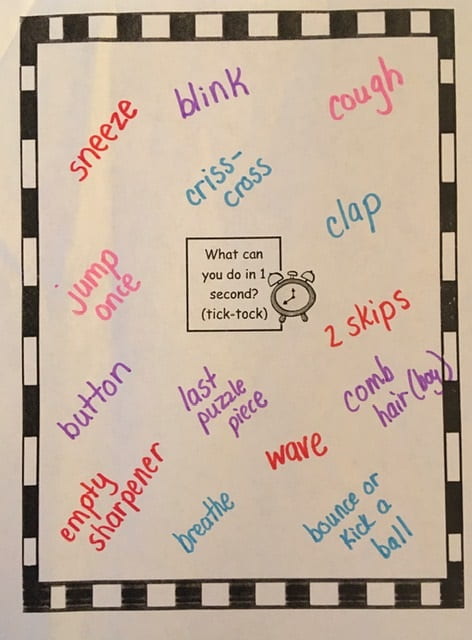
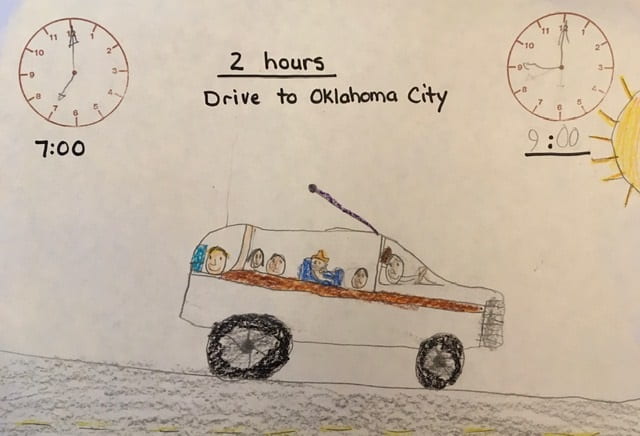
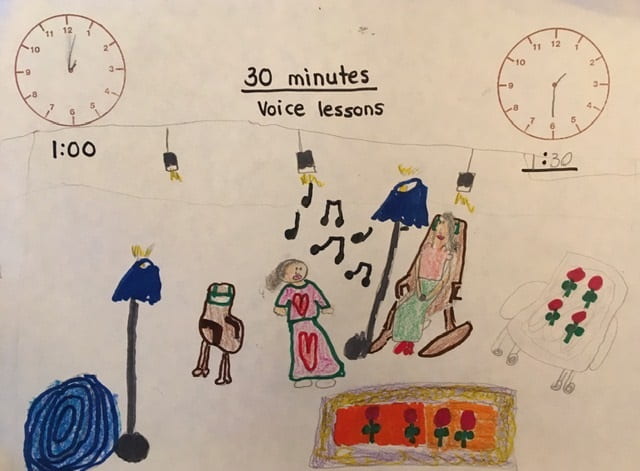
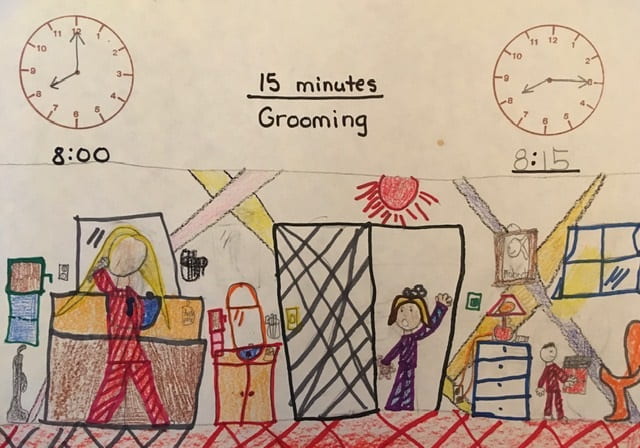
Once students have a better understanding of how long something takes to finish, then students will have a better grasp of telling time and determining reasonableness of elapsed time problems. Plus it may enable them to become better judges of their own time with regards to home chores and school assignments and events.
Enjoy your week! Time Part 2 coming next.
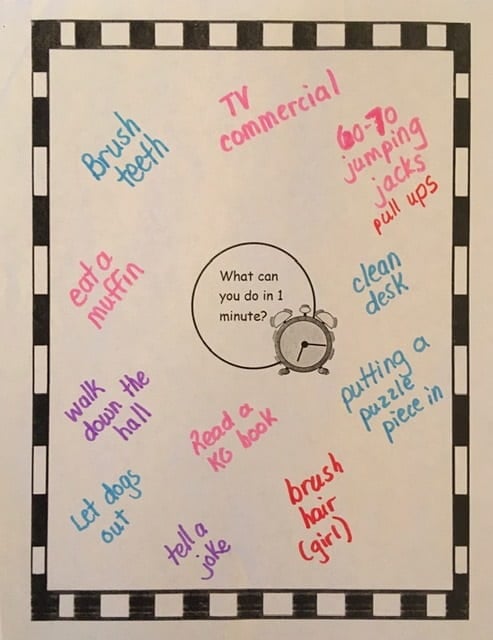
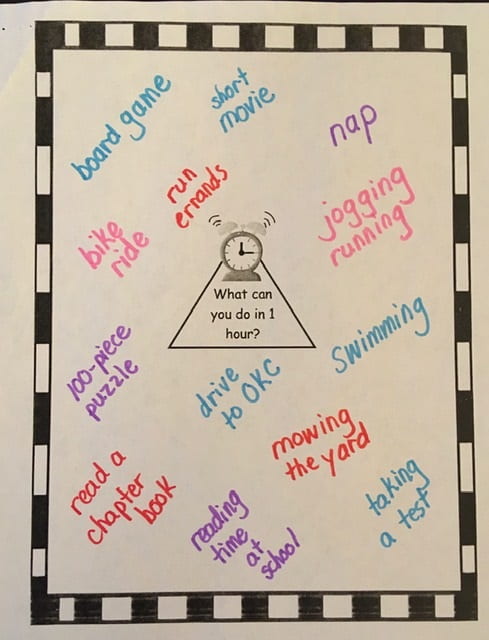
Great thoughts on time and I love the ideas for activities to demonstrate time to kids.
Thanks, Christie! Stay tuned for part 2 coming out later today.